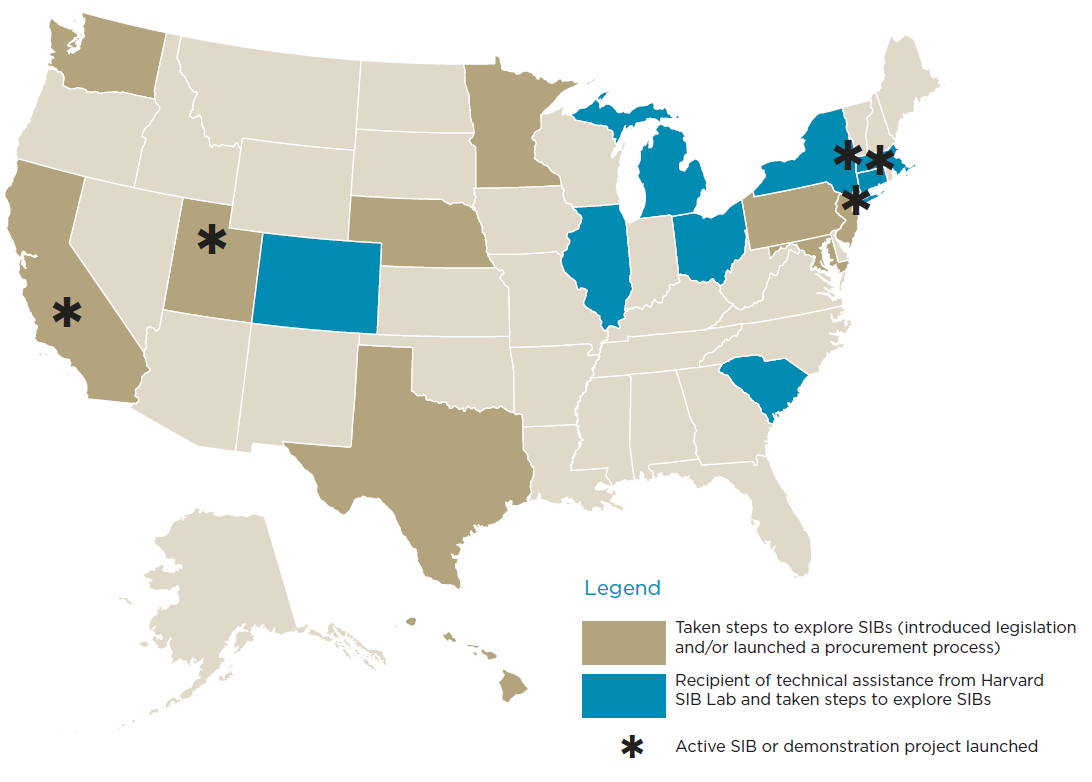Social Impact Bonds and the future of nonprofit finance

Venture philanthropy is a major emerging force today in nonprofit finance, the idea that socially conscious work can also realize a financial return, rather than relying solely on grants and charitable donations. Within venture philanthropy, one of the most intriguing new financing instruments is the social impact bond (SIB)—a mechanism that seeks to connect a private investor’s return with measurable social outcomes that can be linked to a public sector cost savings. According to Center for American Progress, SIBs originated in England and expanded to the U.S. in 2011. Today, there are at least four examples of executed SIBs, with at least 12 others under consideration.
The enthusiasm behind SIBs is understandable. These instruments appear to be an innovative way of connecting private investment capital with cash-strapped nonprofits to achieve public-sector outcomes. It sounds like a win-win. However, these investments only truly benefit everyone if structured in a specific way. They also bring up some complicated issues about how to make sure the public interest is protected, by mitigating the risk of these products. On a larger level SIBs raise important questions about the future of philanthropy and public finance.
Clear Public Sector Cost Savings
An SIB is an agreement between a private investor, a nonprofit, and a government entity. The nonprofit establishes a detailed business plan for a strategy that will alleviate some problem with a public-sector cost. The investor agrees to invest in the nonprofit (typically in the form of a loan), with an agreement from the government entity to pay a return on that investment based on the nonprofit’s success in achieving its outcomes.
For example, Goldman Sachs Urban Investment Group made a $9MM loan to the Boston-based nonprofit Roca for programming targeted at reducing recidivism, to be repaid by the state of Massachusetts based on reported outcomes of reduction in the state prison population. The public sector reports that it sees a savings based on each individual kept out of the prison system. Goldman gets interest on the loan as well as the potential for a greater incremental return if Roca exceeds its goal.
The key to the SIB mechanism is that it is essential that the social outcome have a direct and measurable public-sector cost savings. Without this element the whole structure falls apart. For this reason, many nonprofit programs cannot be used to support an SIB, if the public sector benefit is not directly connected to a real cost savings for the public sector. In addition, the public cost is often not cut and dry, and it can be fairly complex to develop a successful SIB structure.
Who takes the risk?
In most transactions there are entities that take on more risk than others. In the case of SIBs the nonprofit bears very little risk, because if they do not meet their goals the investor absorbs the loss. And if they do meet their goals the government entity pays out the return.
While SIBs are a sweet deal for nonprofits, the other two entities take on real risk. The investor takes on risk if the outcomes are not met, and so the investor is going to mitigate their risk by only financing nonprofits with a deep track record and years of consistent outcomes that they will surely meet or exceed during the duration of the SIB. Clearly the risk level greatly restricts the kind of investor who would participate and the kind of capital that can be deployed.
The public-sector “risk” is based on successful performance—an unusual proposition. The argument is that in the success scenario, the public sector ROI is through outcome-based cost savings (fewer people in prison, on welfare, in public health clinics, etc.); however, we have to be careful to protect the public interest by weighing all of the factors that go into calculating these government costs. For example, can that savings be directly correlated to the nonprofit’s work or are the outcomes possibly the result of external forces? It is critical to answer these questions up-front, have a thorough evaluator and evaluation process, and protect both parties’ interests’ via covenants. SIBs are going to be best measured through a blend of quantitative and qualitative factors, and that takes some creativity to get the agreements right.
Replacing public dollars with private
SIBs can be a challenging sell for public-sector entities because oftentimes it is not clear, even in the best scenario, that these investments represent a true net gain for the public sector. For example, many nonprofits deliver programs that are funded by foundation grants. If the public sector takes on an SIB obligation for these programs, then the government entity is being asked to put real dollars on the line for a program that the government was essentially receiving for free.
For this reason, the most responsible match for SIBs is to target programs that the public sector is directly financing, where SIB dollars replace public-sector dollars with private investment. However, even this can be tricky to calculate because government entities pass through federal or state dollars that cannot be reprogrammed. So if a government entity takes on an SIB obligation, it should be able to demonstrate that 1) the nonprofit program was being supported by public funding rather than foundation grants; 2) that the public funding saved can in fact be re-programmed; and 3) if the nonprofit exceeds its goal that this is still a true net gain for the public sector. The point is that the public sector’s bottom line needs to be viewed holistically. As taxpayers we have a responsibility to make sure that the calculation on the part of the government entity is thorough.
SIBs and Innovation
SIBs are not ideal for encouraging new and innovative approaches. In an SIB structure, the private investment partner’s risk is based on the nonprofit under-performing. Therefore it is critical that the nonprofit’s approach be time tested and highly predictable. This situation provides the best risk scenario for the investor, but it does not encourage innovation. The only real way to support innovative programs with SIBs is if there is a way to do so via non-recourse loans seeded with dollars that do not have a repayment obligation (such as a foundation grant parked at an intermediary). These products do exist, thanks to some generous foundations, but they are scarce.
An important tool in an integrated toolkit
There are scenarios where SIBs create a win-win situation that is fiscally responsible and that frees up public-sector dollars for other uses. However, a lot of variables need to align for that situation to play out. While SIBs provide a new tool for creative nonprofit finance, it would be wrong to view them as a panacea. Except in certain scenarios they are fairly inflexible and do not encourage innovation.
Investors like Goldman should be applauded for diving into fresh territory and testing out these new types of products. However, we should also applaud those foundations that have stayed solidly in the pure grants space. There are fewer and fewer of them out there, but the need for their investments has only increased. As we move forward in the age of integrated finance models for nonprofits, we need to ensure that the equation not tilt too far away from traditional philanthropy—the future of innovation and meaningful social impact depend on it.
WHYY is your source for fact-based, in-depth journalism and information. As a nonprofit organization, we rely on financial support from readers like you. Please give today.






